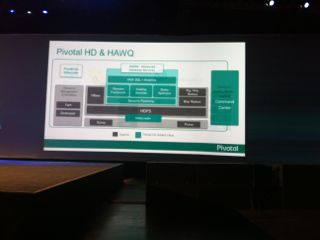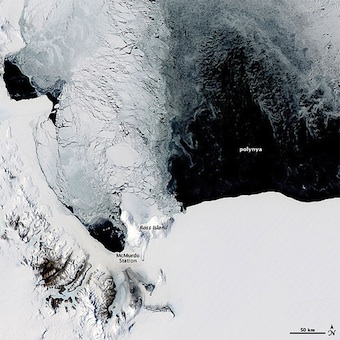 The first session of the day was with Joe Tucci EMC Chairman and CEO. He talked about the trends transforming IT today. These include Mobile, Cloud, Big Data and Social Networking. He then discussed IDC’s 1st, 2nd and 3rd computing platform framework where the first was mainframe, the second was client-server and the third is mobile. Each of these platforms had winers and losers. EMC wants definitely to be one of the winners in the coming age of mobile and they are charting multiple paths to get there.
The first session of the day was with Joe Tucci EMC Chairman and CEO. He talked about the trends transforming IT today. These include Mobile, Cloud, Big Data and Social Networking. He then discussed IDC’s 1st, 2nd and 3rd computing platform framework where the first was mainframe, the second was client-server and the third is mobile. Each of these platforms had winers and losers. EMC wants definitely to be one of the winners in the coming age of mobile and they are charting multiple paths to get there.
Mainly they will use Pivotal, VMware, RSA and their software defined storage (SDS) product to go after the 3rd platform applications. Pivotal becomes the main enabler to help companies gain value out of the mobile-social networking-cloud computing data deluge. SDS helps provide the different pathways for companies to access all that data. VMware provides the software defined data center (SDDC) where SDS, server virtualization and software defined networking (SDN) live, breathe and interoperate to provide services to applications running in the data center.
Joe started talking about the federation of EMC companies. These include EMC, VMware, RSA and now Pivotal. He sees these four brands as almost standalone entities whose identities will remain distinct and seperate for a long time to come.
Joe mentioned the internet of things or the sensor cloud as opening up new opportunities for data gathering and analysis that dwarfs what’s coming from mobile today. He quoted IDC estimates that says by 2020 there will be 200B devices connected to the internet, today there’s just 2 to 3B devices connected.
Pivotal’s debut
Paul Maritz, Pivotal CEO got up and took us through the Pivotal story. Essentially they have three components a data fabric, an application development fabric and a cloud fabric. He believes the mobile and internet of things will open up new opportunities for organizations to gain value from their data wherever it may lie, that goes well beyond what’s available today. These activities center around consumer grade technologies which 1) store and reason over very large amounts of data; 2) use rapid application development; and 3) operate at scale in an entirely automated fashion.
He mentioned that humans are a serious risk to continuous availability. Automation is the answer to the human problem for the “always on”, consumer grade technologies needed in the future.
Parts of Pivotal come from VMware, Greenplum and EMC with some available today in specific components. However by YE they will come out with Pivotal One which will be the first framework with data, app development and cloud fabrics coupled together.
Paul called Pivotal Labs as the special forces of his service organization helping leading tech companies pull together the awesome apps needed for the technology of tomorrow, consisting of Extreme programming, Agile development and very technically astute individuals. Also, CETAS was mentioned as an analytics-as-a-service group providing such analytics capabilities to gaming companies doing log analysis but believes there’s a much broader market coming.
 Paul also showed some impressive numbers on their new Pivotal HD/HAWQ offering which showed it handled many more queries than Hive and Cloudera/Impala. In essence, parts of Pivotal are available today but later this year the whole cloud-app dev-big data framework will be released for the first time.
Paul also showed some impressive numbers on their new Pivotal HD/HAWQ offering which showed it handled many more queries than Hive and Cloudera/Impala. In essence, parts of Pivotal are available today but later this year the whole cloud-app dev-big data framework will be released for the first time.
 Next up was a media-analyst event where David Goulden, EMC President and COO gave a talk on where EMC has come from and where they are headed from a business perspective.
Next up was a media-analyst event where David Goulden, EMC President and COO gave a talk on where EMC has come from and where they are headed from a business perspective.
Then he and Joe did a Q&A with the combined media and analyst community. The questions were mostly on the financial aspects of the company rather than their technology, but there will be a more focused Q&A session tomorrow with the analyst community.
 Joe was asked about Vblock status. He said last quarter they announced it had reached a $1B revenue run rate which he said was the fastest in the industry. Joe mentioned EMC is all about choice, such as Vblock different product offerings, VSpex product offerings and now with ViPR providing more choice in storage.
Joe was asked about Vblock status. He said last quarter they announced it had reached a $1B revenue run rate which he said was the fastest in the industry. Joe mentioned EMC is all about choice, such as Vblock different product offerings, VSpex product offerings and now with ViPR providing more choice in storage.
Sometime today Joe had mentioned that they don’t really do custom hardware anymore. He said of the 13,000 engineers they currently have ~500 are hardware engineers. He also mentioned that they have only one internally designed ASIC in current shipping product.
Then Paul got up and did a Q&A on Pivotal. He believes there’s definitely an opportunity in providing services surrounding big data and specifically mentioned CETAS as offering analytics-as-a-service as well as Pivotal Labs professional services organization. Paul hopes that Pivotal will be $1B revenue company in 5yrs. They already have $300M so it’s well on its way to get there.
 Next, there was a very interesting media and analyst session that was visually stimulating from Jer Thorp, co-founder of The Office for Creative Research. And about the best way to describe him is he is a data visualization scientist.
Next, there was a very interesting media and analyst session that was visually stimulating from Jer Thorp, co-founder of The Office for Creative Research. And about the best way to describe him is he is a data visualization scientist.
 He took some NASA Kepler research paper with very dry data and brought it to life. Also he did a number of analyzes of public Twitter data and showed twitter user travel patterns, twitter good morning analysis, twitter NYT article Retweetings, etc. He also showed a video depicting people on airplanes around the world. He said it is a little known fact but over a million people are in the air at any given moment of the day.
He took some NASA Kepler research paper with very dry data and brought it to life. Also he did a number of analyzes of public Twitter data and showed twitter user travel patterns, twitter good morning analysis, twitter NYT article Retweetings, etc. He also showed a video depicting people on airplanes around the world. He said it is a little known fact but over a million people are in the air at any given moment of the day.
Jer talked about the need for data ethics and an informed data ownership discussion with people about the breadcrumbs they leave around in the mobile connected world of today. If you get a chance, you should definitely watch his session.
Next Juergen Urbanski, CTO T-Systems got up and talked about the importance of Hadoop to what they are trying to do. He mentioned that in 5 years, 80% of all new data will land on Hadoop first. He showed how Hadoop is entirely different than what went before and will take T-Systems in vastly new directions.
Next up at EMCworld main hall was Pat Gelsinger, VMware CEO’s keynote on VMware. The story was all about Software Defined Data Center (SDDC) and the components needed to make this happen. He said data was the fourth factor of production behind land, capital and labor.
Pat said that networking was becoming a barrier to the realization of SDDC and that they had been working on it for some time prior to the Nicera acquisition. But now they are hard at work merging the organic VMware development with Nicera to create VMware NSX a new software defined networking layer that will be deployed as part of the SDDC.
Pat also talked a little bit about how ViPR and other software defined storage solutions will provide the ease of use they are looking for to be able to deploy VMs in seconds.
Pat demo-ed a solution specifically designed for Hadoop clusters and was able to configure a hadoop cluster with about 4 clicks and have it start deploying. It was going to take 4-6 minutes to get it fully provisioned so they had a couple of clusters already configured and they ran a pseudo Hadoop benchmark on it using visual recognition and showed how Vcenter could be used to monitor the cluster in real time operations.
Pat mentioned that there are over 500,000 physical servers running Hadoop. Needless to say VMware sees this as a prime opportunity for new and enhanced server virtualization capabilities.
That’s about it for the major keynotes and media sessions from today.
Tomorrow looks to be another fun day.



![[InfiniBand interconnected] Isilon Packaging by ChrisDag (cc) (from Flickr) [InfiniBand interconnected] Isilon Packaging by ChrisDag (cc) (from Flickr)](https://i0.wp.com/silvertonconsulting.com/wp-content/uploads/2012/01/2716975537_97c2a2a1fdRZ.jpg?resize=340%2C277)


